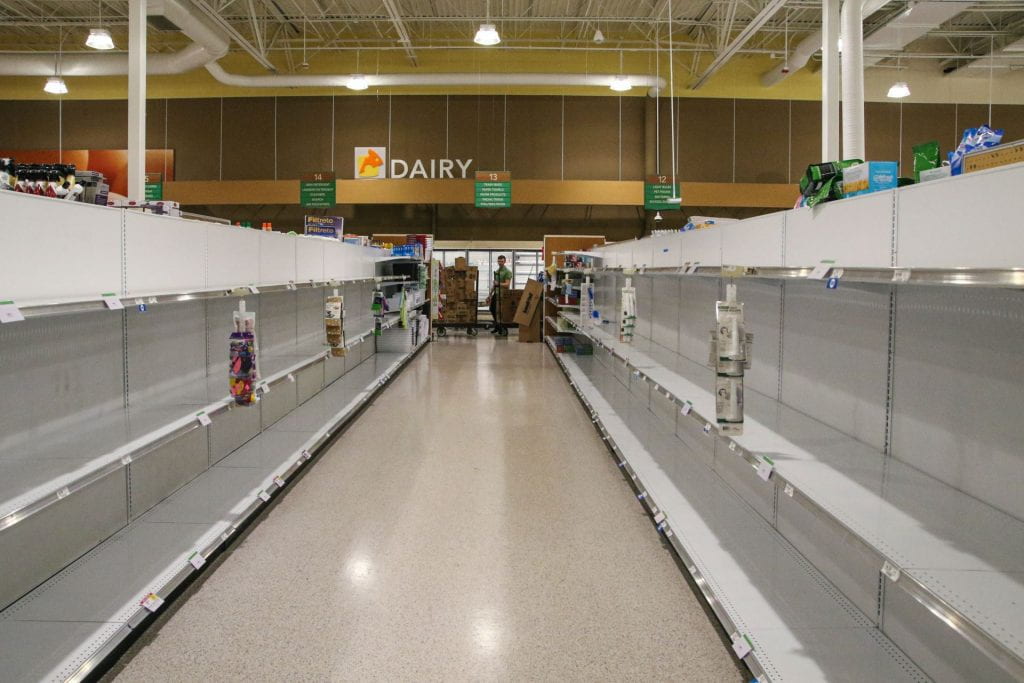By Virginia Capmourteres
Curious about how the COVID-19 pandemic is affecting our environment? From air pollution, to freshwater fish conservation, to ecological grief, to environmental racism, these are some lessons learned across the globe.
Most major cities across the globe, the authors claim, need to strengthen their health-care systems, improve communications with citizens, ensure sourcing of food and services, fight for equality, and make nature a priority. The newly created Global Mayors COVID-19 Recovery Task Force aims to rebuild cities and economies in a way that improves public health, reduces inequality and addresses the climate crisis.
The authors describe a mix of observed and potential impacts of COVID-19 on environment and climate change. Some of these are negative impacts (e.g. reduction of monitoring capacity, increased waste disposal), while others are positive (e.g. decreased noise pollution, improved adaptation plans) or neutral (e.g. long-term changes in societal behaviour).
While many have stridently recommended banning markets, Montgomery and collaborations explain that this can have profound negative and unintended impacts on vulnerable human populations. Instead, the authors suggest strengthening local authorities responsible for regulating the trade of wildlife for consumption.
The pandemic has constrained the influx of imported goods to big cities, the food supplies in areas that depend on migrant farm workers, and the capacity to move fresh produce long distances. Despite this, food is being thrown away as demand from restaurants, schools, cruise ships, and other venues has plummeted. Give this paper a read if you want to know the role that agroecology could play in re-shaping agriculture after the pandemic!

In the context of ecological grief (grief due to anticipated or experienced ecological losses), the animal reclamation of urban spaces observed during the lockdown can be a reason for environmental hope! The author argues that the idea that nature has been able to ‘hit the reset button on us’ gives us a comforting reassurance: Our Planet is more resilient that we thought. How can we harness this renewed environment hope to find more sustainable pathways moving forward?
The authors have found that concentrations of PM10 (particulate matter of 10 micrometers or less in diameter) and PM2.5 (particulate matter of 2.5 micrometers or less in diameter) have dropped by half in a post-lockdown Delhi. Similar trends were observed for nitrogen dioxide and carbon monoxide. Overall, Delhi has seen an improvement of 40-50% in air quality!
Muhammad and collaborators summarize some of the consequences of the COVID-19 pandemic. For example, we know that lockdowns have reduced transport activities, which resulted in less energy consumption and lower oil demand. NASA, for example, showed that environmental quality improved in many areas across the globe. Google, through it’s mobility index, also reported that mobility was reduced up to 90%, particularly across Spain, Italy and France.

The authors explain some of the silver linings of the OVID-19 pandemic, such as the improvement or air and water quality across the globe, and the decrease in carbon emissions. However, they also recognize that stock markets have dropped and massive amount of medical waste are being generated.
The energy and environmental footprints of plastic products for personal protection equipment and healthcare have increased rapidly in response to COVID-19. The authors argue that critical hazardous waste management issues are now emerging, as we strive to ensure the destruction of residual pathogens in household and medical waste.

Zambrano-Monserrate and team share their thoughts on the topic of waste. They report an increase in online shopping, as well as a greater amount of organic and inorganic waste generated by households. To complicate matters, countries such as the USA have stopped recycling programs, while others, like Italy, are restricting waste sorting and management.
Mass and collaborators discuss the challenges that the pandemic poses on scientists. The authors argue that, unfortunately, these challenges will impact early-career scientists the most, especially those from underrepresented, disadvantaged and/or discriminated groups in the fields of environmental sciences, including women, researchers from the Global South and persons with disabilities.
Washington brings up to our attention the problem of environmental racism: Inequalities in exposure to environmental pollutants that are perpetuated by indifference and ignorance, inadequate testing of industrial chemicals, racism, housing discrimination, corporate greed and lax legislation. Washington argues that we need to anticipate these outsized environmental assaults that people of colour face, so we can protect lives during the current and future pandemics.

The authors conclude that zoonotic disease risks are ultimately interlinked with biodiversity crises and water insecurity. They argue that the current pandemic creates an opportunity for systemic policy change. We have seen that systemic change is achievable, as demonstrated by the rapid and unprecedented political and economic responses to the pandemic. What if we were to transfer these behavioural changes to other existential, global-scale threats such as climate change and the biodiversity crisis?
Pinder and collaborators report that rivers in India are now running clear for the first time in decades. However, due to the unavailability of fish as a food resource during the pandemic, local communities have resorted to the exploitation of wild population of freshwater fish. These new recruited fishers, however, lack knowledge on sustainable and responsible capture techniques. As a result, illegal and destructive methods are being used, putting endemic and threatened species at a greater risk of extinction.
The authors summarize the two main conditions for infectious diseases to cross the species barrier from wild animals to humans. First, the human encroachment into wild areas and forests, which leads to ecological disruptions. Second, the expanding demand for wild meat and live wild animals. Volpato and team show, once again, that human and environmental health and tightly linked!



